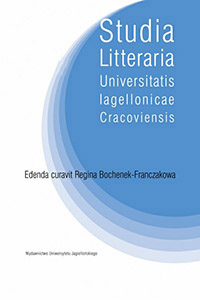Narodziny hiperksięgi: Fajfer, Radovanović, Naum
The Birth of the Hyperbook: Fajfer, Radovanović, Naum
Author(s): Jakub KornhauserSubject(s): Poetry, Studies of Literature, Recent History (1900 till today), Theory of Literature
Published by: Wydawnictwo Uniwersytetu Jagiellońskiego
Keywords: experimental poetry; conceptual poetry; neo-avant-garde; liberature; book art; Zenon Fajfer; Gellu Naum; westeast movement;
Summary/Abstract: The term “liberature” (pol. liberatura; from lat. liber – book; libertas – freedom), was introduced by Zenon Fajfer in 1999 in his essay Liberature. Appendix to a Dictionary of Literary Terms to describe the phenomenon of literary works created as material artifacts rather than only a neutral containers for a text. As Fajfer writes, the first, elementary space is an “actual book – a material object”. In one of his liberature-inspired manifestos, “Liberature: hyperbook in the hypertext era”, Fajfer introduces the term of “hyperbook” which involves both material and unique aspects character of this special kind of a literary work, created as a fully prepared artifact. I focus on two different examples of neo-avant-garde hyperbooks not only to discuss their dissimilarities, but also to emphasize their material structure and mutual influence. The first example is the hyperbook-manifesto of “verbo-voco-visual” literary and art movement in Slovenia containing interdisciplinary works and various objects fixed to the paper as the crucial elements of its spatial identity. The second work is Gellu Naum’s The Advantage of Vertebrae, a cycle of ten collage poems, published in 1975. This cycle consists of ten boards, covering ten pages in the paper edition. Though originally, all of the collages were presented on a single canvas, inside a wooden frame painted pink, hanging on the wall in one of the Bucarest art galleries. The most important issue comes from the fact that the prevalence of the both Westeast 4 anthology and Gellu Naum’s cycle are not widely available in their original (respectively, dispersed or non-existing) form, but reprinted in the books, reproduced in thousands of copies in various selections. Therefore, all published versions gain the status of the original hyperbook.
Journal: Studia Litteraria Universitatis Iagellonicae Cracoviensis
- Issue Year: 11/2016
- Issue No: 4
- Page Range: 187-200
- Page Count: 14
- Language: Polish

